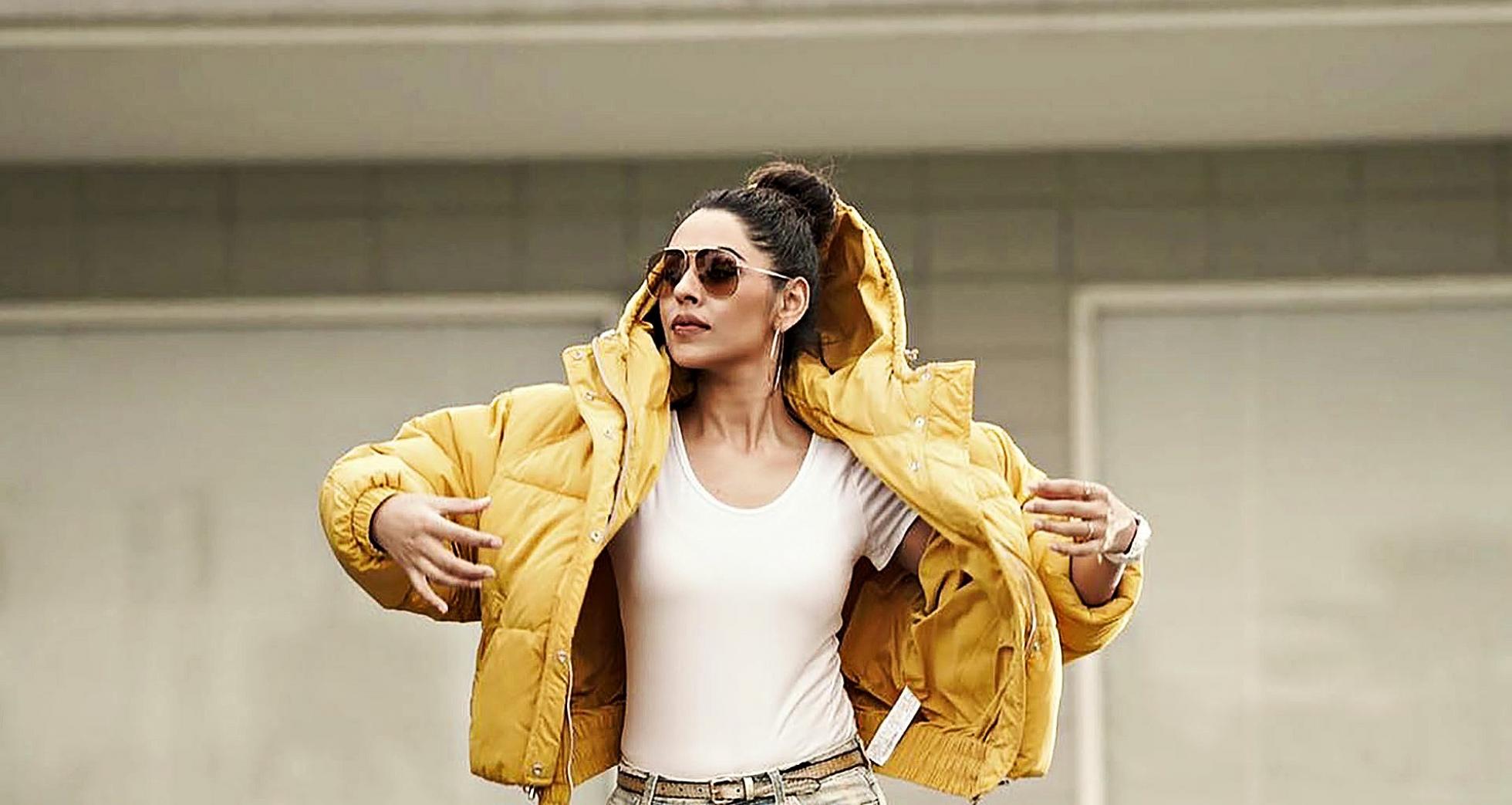
The emerging female artists from India who bring a multilingual and multicultural heritage to the global music scene

Although it’s been more than 50 years since The Beatles made their famous trip to India, when people think about music coming from this part of the world it’s very likely they will recall the sounds of their collaborator Ravi Shankar, a virtuoso sitar player who successfully translated and exported a particular era and sound of Indian music to the rest of the world. However, it’s impressive to see how much the scene has evolved from his characteristic music style.
This is also true for Bollywood music being a quick go-to reference of what music from India sounds like. On the contrary, a quick look at the local scene shows that it’s impossible to corner the “Indian Sound” into a particular type of music or genre. DIVINE’s “gully rap”, F16’s alternative pop disguised in a rock and roll outfit, the rise of indie-folk singer-songwriters across languages, cities and states, all the way to the regional counterparts of Bollywood, such as Tollywood, Sandalwood etc., Punjabi Pop from Punjab, Acoustic Dream Pop from Nagaland, and folk music from different states such as Karnataka and Jammu & Kashmir, are just a handful of the wide range of diverse music scenes and genres India has to offer. Music coming from India is an amalgam of multiple languages and art cultures that have existed for centuries. The heterogeneity of this market is what makes for a perfect ecosystem for the music business.
As this musical diversity thrives, something similar is starting to happen with the way artists are being able to generate new income streams in the local industry. Traditionally, the music industry in India has been strongly bonded to the film industry, reflected in the fact that music soundtracks represent up to 80% of all recordings in India. Under this structure, artists that could reach national audiences used to work mainly under a “work for hire” agreement in which the Labels owned all of the rights to the music and its promotion was focused on the movie and its actors, leaving musicians mostly behind the scenes or on a secondary level.
However, as democratization of music has taken root in the country, owing to the growing internet penetration rates (45%), there’s an argument to mention that Independent and Non-Film music scenes are on the rise, with artists being able to distribute their music and promote themselves beyond movies. This was reinforced by the way COVID closed many cinema theaters around the country. We can look at Jenny Johal as an example of it: while many movie projects were on hold, she decided to independently release music videos that resemble movie aesthetics, and managed to escape the traditional distribution and promotional holds of the industry. This is also the case with many other independent artists, who, by distributing their music through platforms such as Believe, have been able to land sync opportunities as video streaming platforms such as Netflix and Amazon Prime keep expanding their investment in developing local original content.
As we’ve seen with the international crossover of Afrobeats and Reggaeton, local subcultures are becoming increasingly global, especially when they are fueled by a thriving independent music scene that constantly injects local music with new innovations. Hence, we can soon expect some sort of Indian sound to become a longstanding part of the global charts. This makes it thrilling to take a look at the Indian music landscape and discover a wide range of musical innovations that could eventually reach audiences all around the globe.
Gowry Lekshmi
Gowry Lekshmi has a multifaceted music career, ranging from releasing Malayalam Indie music, playback singing for films, along with working as a composer in Kerala. Having written the song "Sakhiye" for the film Casanova when she was just 13 years old, makes her the youngest female music director in India. You can also hear her experimenting with her Carnatic classical music roots, which she effortlessly combines with electronic elements for her independent music releases. One such release is her single ‘Suttum Vizhi’ from the 2021 EP Rathnamala. We hear her sing the popular poem in a captivating Carnatic vocal style that sits within an ambient-pop world, which makes it both soothing and powerful. The EP features several Classical and Semi-Classical songs including Carnatic Kritis, Poems and Bhajans.
Chai Lenin
"Carnatic music and its improvisational elements and electro elements’ sense of groove and unfolding helped me articulate a deeply interpersonal and yet at the same time, personal way of transcending our individualities to collectively reminisce about what it entails to hope." - Chai Lenin
Chai Lenin is a multilingual Singapore-bred artist with roots in Kerala, India. Carnatic music is a huge part of Lenin’s musical identity, owing to her parents who were active in the Indian Classical music scene in Singapore. She is skillful in bridging her Carnatic music roots with her Indie-pop songwriting and modern production. Her mission to create renditions of music that are diverse, inclusive and accessible shows not just in her music influences but also in her use of the languages English, Tamil and Malayalam. Her recent single Blossoming Blues features a beautiful slow paced verse in Tamil, and her smooth transition back to the English chorus really flaunts her multiple music personas coming together in a track.
Sangeetha Rajeev
“I personally feel that music is the best way to represent the culture of our nation and the folk musicians across the country have been really bringing in the variety of music & celebrating their culture. Today we get to listen to some unexplored flavors of music from every corner of the country. When folk is blended with a widely accepted music genre like pop or rock, it’s getting international recognition. And that’s the way to go about it. Representing our culture to the entire world.” - Sangeetha Rajeev
Sangeetha Rajeev A.K.A SaRa, is an Indian artist, singer and performer who has sung for many films in the Sandalwood, Tollywood and Bollywood film industry. Apart from this, she also has a successful career releasing music Independently. Her latest release “Lovvu Lovvu” is a new age Kannada Folk- Pop song in the dialect of Kannada spoken in the Mandya district of Karnataka. The music video of the song garnered over 1.2+ M views, showcased her in traditional Karnataka clothing and is set in beautiful outdoor landscapes from the State. Like many of her contemporaries, she is also a multilingual artist that can juggle a diverse number of genres in all her work, including Kannada Pop, Telugu Pop and Hindi Pop.
Jenny Johal
“I think everyone is playing their part to globalize Indian music. But I also think this new age of singers and music producers are the ones bringing the most innovation to India's music industry. It’s the perfect amalgam of hip hop beats and lyrics what is taking Indian music to another level.” - Jenny Johal
Jenny Johal is a great example of the ways in which the effects of the pandemic and the new landscape of the Indian music industry is shaping artists into new directions. Known as a famous playback singer for the Punjabi movie Industry, Jenny is also a very versatile artist that can easily produce great Punjabi pop, Bhangra and Punjabi folk tracks. This is a characteristic that is showcased the best through her independent and non-movie releases, a list that racks collaborations with artists such as R Nait, Amrinder Gill and Ezu. Her impressive vocal range gorgeously compliments her fun and energetic artist identity, which is very much in touch with her Punjabi roots (lyrics in punjabi, traditional punjabi clothing, music influenced by punjabi folk music, punjabi folk dance in music videos). These elements allow her to bring any pop template closer to local aesthetics with fresh energy. This is the case of “Repeat Sohniye”, a 2020’s song that uses trending reggaeton dembow rhythms to create a Punjabi Urban Pop version of that could come close to Badshah's more recent collaboration with J. Balvin "Voodoo,", but stands out by a sort of indie playfulness and authenticity that has to do with the symbiotic way Jenny can embed her punjabi roots into pop templates.
Mrunal Shankar
“I feel there's much more meaning, intention, history and heart to our music [compared to foreign music], be it any genre. Their music can be mindful, ours is soulful. Struggles and hardships of the artists while doing all these amazing things are the same, wherever you go.” - Mrunal Shankar
Mrunal Shankar is one of the rising faces of female Hip Hop in India and a lyricist that catches your attention by her quickness and seamless way in which she can go back and forth between English and Hindi. This allows her to create fast tongue twisters that feel almost like Mrunal is creating her own new creole dialect. Taking a big inspiration from Beyonce’s career and the sound aesthetics of her earlier group Destiny’s Child, Mrunal’s has a signature style that combines downtempo trap beats and a kick-ass female boss attitude with U.S.’ 2000’s RnB & Hip Hop melodies. This is particularly interesting to hear on her recent single “Ride With Me”, a song that on top of all of these mixes showcases vocal hooks that hit a sweet spot between Indian classical vocal melodies as well as tone changes that remind us of Britney Spears first album.
Nikitaa
“Growing up in India, no one really questions the way you look or your ethnicity because you’re surrounded by Indians. When you move to a whole different country, the shock sets in. Men will start to fantasize about you. The one comment I’d always get is “you’re so ethnically ambiguous,” suddenly that’s extremely appealing to every guy I came across. It’s very frustrating because it seemed like my sexuality and my appearance became something to be gawked at. That record was definitely born out of that frustration, wanting to take that experience and put it out there. No, this is not about you. My body’s for me, my sexuality’s for me, my expression’s for me.” - Nikitaa
Singer and Songwriter, Nikitaa is a Dance pop, and RnB artist from Mumbai, who is currently based in L.A. She brings to the world a new genre she calls “Goddess Pop”, in which she gracefully combines Ethereal-Pop/RnB with her South-Asian Roots. Her last Album ‘High Priestess’, is a great example of her ability to transcend culture and ethnicity. Born out of her frustrations of being fetishized as a South-Asian woman in L.A, the album touches the themes of growth and power, celebrating one’s individuality. Sonically, the album is fun, sensual, ethereal and authentic to Nikitaa’s mission as an artist.
Bambi Bains
“[Being a female in the music industry] It’s a lot of pressure. There have been times where I wanted to give up, but I never quit if I believe I can aim higher. There have been times where I have felt left out and felt like I wasn’t good enough but some people make you feel that way because you’re a young female, and at the start, very naïve.I t’s time to break barriers for Asian women and show not only the industry, but also the world how capable we actually are.” - Bambi Bains
Bambi Bains is a singer, model and dancer born in Birmingham that has been part of the UK Bhangra scene since her teenage years. After starting her career as a backup dancer for Punjabi music videos, she was discovered - and later signed on to the PBN (Punjabi By Nature) production team - while singing on a break during the recording of a music video. Ever since, she has developed a career that is full of hit songs that are able to combine and bring into the mainstream the separate worlds of gospel and punjabi singing like no other artist can do. Her song “Khayal” is a great example of this, a nu-RnB track that brings this type of music to a new evolution by the seamless way Bambi Punjabi vocals run with the laid back groove of the beat. Her ability to create new musical innovations by combining international sounds together doesn’t stop there as we can see in the way she brings different Punjabi influences on top of reggaeton banger “Retro Rarri” and her Afrobeat collab “Beautiful Girl” alongside Afro Swing sensation Afro B.
Baani Sandhu
Featured on the cover of the Spotify’s playlist Equal India, Baani Sandhu is an accomplished Punjabi pop artist in the country. Sandhu is a frontrunner in the new female led music wave in Punjab, where increasingly, the women-centric lyrics are paving way in an industry long dominated by male narratives. Sandhu’s recent success with her releases are a testimony to a new way forward. With her singles ‘8 Parche’ and ‘Tere Piche Piche’, she has left her fans eager in anticipation for her upcoming album ‘The Boss Lady’. She is also a part of Audiomack’s curated playlists under their vertical ‘Audiomack Punjabi’, that will focus on positioning Punjabi subcultures alongside other popular subcultures such as hip-hop and Latin music.
Mamta Sharma
Mamta Sharma is a well-known Bollywood playback singer who is also making a name for herself as a Non-Film artist. Her recent independent release was a recreation of ‘Mera Dil Bhi Kitna Pagal Hai’, the famous 1991 song from the movie Saajan, which made waves across the country. Released as an ode to the song close to its 30-year anniversary, the video features a romantic sequence amid beautiful Ladakh landscapes. It will be interesting to see if Sharma continues to collaborate with composers and songwriters or even don multiple hats herself and release more music independent of her Bollywood roots in the future.

